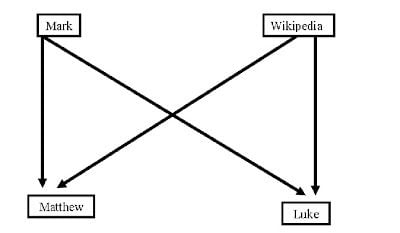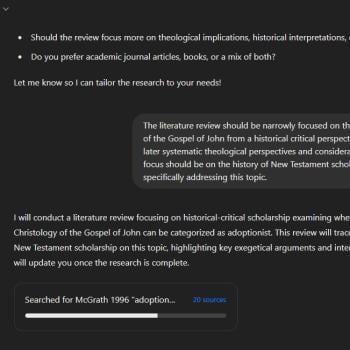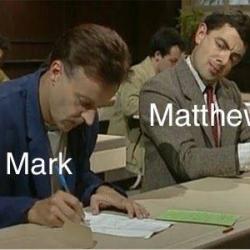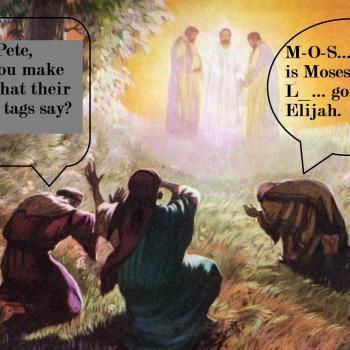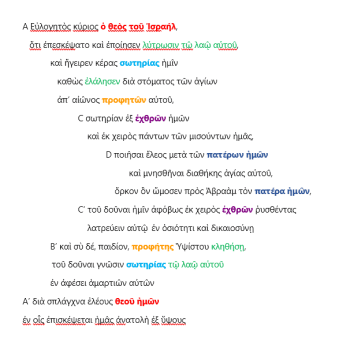I have been reading Francis Watson’s recent book What Is a Gospel? (not least because I will be giving a talk in Durham University’s New Testament Seminar on October 24th, but also because Eerdmans kindly sent me a review copy). The book is rich with insights and suggestions that are bound to move discussion forward not only on the subject of the genre of the Gospels, but also on related subjects like the Synoptic problem and the relation between canonical and extracanonical Gospels.
One point Watson makes that really grabbed my attention (as I have been working not only on the Durham presentation, but also the one I will give in November in the Q program unit at SBL) is that discussions about Q have been predicated, on the one hand, on the assumption that Luke scattering sayings from Matthew’s organized discourses is unthinkable, and on the other hand, that if Luke knew Matthew then there is no need for Q. Matthew, Watson suggests, quite likely utilized a written collection of the sayings of Jesus even if Luke used Matthew.
This seems to open up an interesting possibility with regard to the Synoptic Problem. It is easy to envisage more or less every Gospel author utilized the other sources available to them (perhaps with the exception of John, about which I am not persuaded, and also the very earliest two sources, Mark and the Sayings Collection). We would then end up with something like the following:
Mark and the Sayings Collection are written, probably separately
Matthew uses Mark and the Sayings
John writes his Gospel?
Papias uses Matthew, Mark, the Sayings, and John
Luke uses Matthew, Mark, the Sayings, John, and Papias
Here is where it gets interesting. Even if Luke only used Matthew and Matthew’s sources, Luke may have given preference to the earlier sources. This would explain why Luke looks like Mark and the source of Matthew’s sayings on the whole, and yet at the same time would also explain why Luke and Matthew occasionally converge. Whether deliberately or subconsciously, consultation of Matthew could have influenced Luke. This scenario allows us simultaneously to view Luke as preserving earlier versions of saying also found in Matthew, and to avoid convoluted explanations for the Matthew-Luke agreements.
I’m tempted to call this the Farrer+Q Hypothesis if only because it can be abbreviated as FarQ, which rhymes with what I anticipate that both supporters of Q and detractors will say to me when they read this.
This is not entirely unlike things that others have proposed, such as Dennis MacDonald in his Two Shipwrecked Gospels. Has anyone suggested more or less precisely what I’ve outlined here?
I also think that the Logia source of which fragments were discovered at Oxyrhynchus (P. Oxy. 1, P. Oxy. 654, and P. Oxy. 655) deserves to be revisited, in the sense that it is clear from its overlaps with the Coptic Gospel of Thomas that the latter adapts and modifies its Greek source material. While we only have access to most of that Greek source through the Nag Hammadi text, two questions still deserve to be asked. The first is whether the Greek Logia text might not differ from Coptic Thomas as much as Mark or Q differs from their equivalent in Matthew and Luke. In other words, should we view the Greek text as a source used by Thomas rather than viewing Thomas as a translation of the Greek text? The second question is whether the Gospel of Thomas referred to a Greek work that used the Logia source, or to the Logia source itself.
Let me emphasize that the above thoughts are prompted by what Watson wrote but are not to be understood as reflecting his points or views unless that is specifically stated. Watson’s book is rich in detail exploring interrelation of texts within and beyond the canon. He makes numerous crucially important points, including that Tatian’s Diatessaron proves that an ancient author could (contrary to what some claim) take multiple texts and weave them together at a minute level of detail (see the table illustrating this on pp.299-300).
This is probably also a good time to circulate once again the graphic I shared almost a decade ago, after coming across it in a comment on Mark Goodacre’s blog, offering a very modern solution to the Synoptic Problem:
